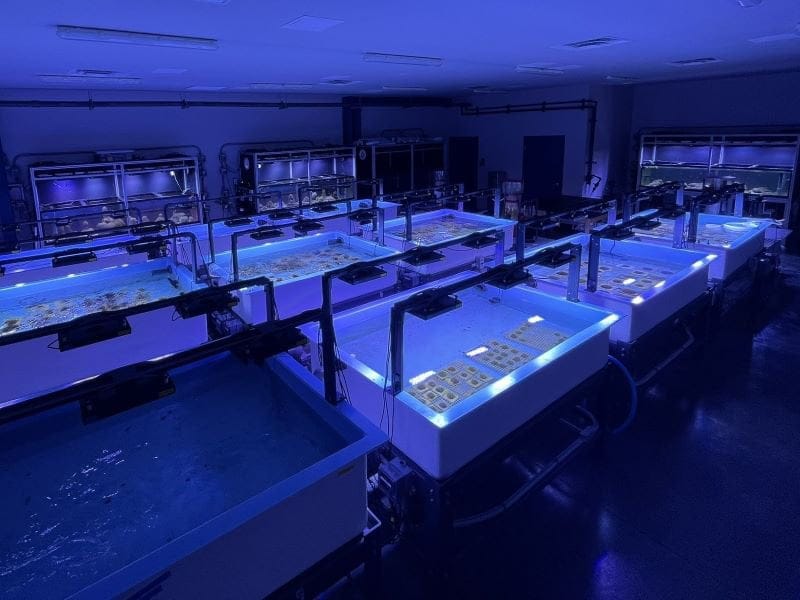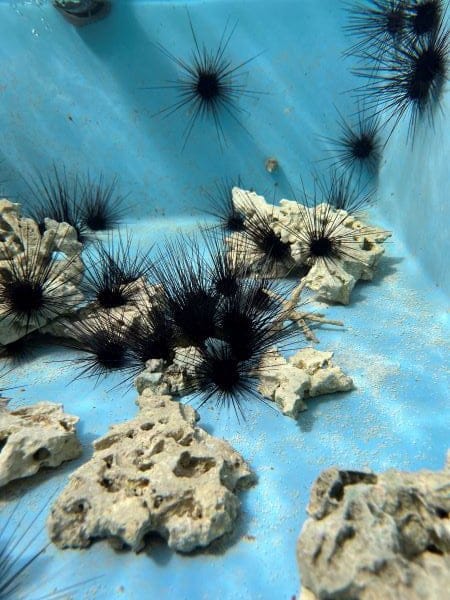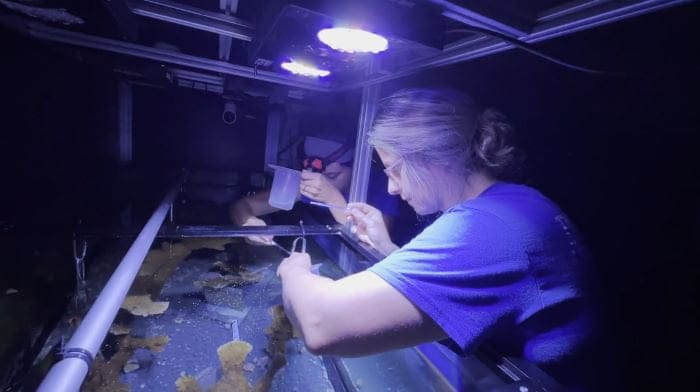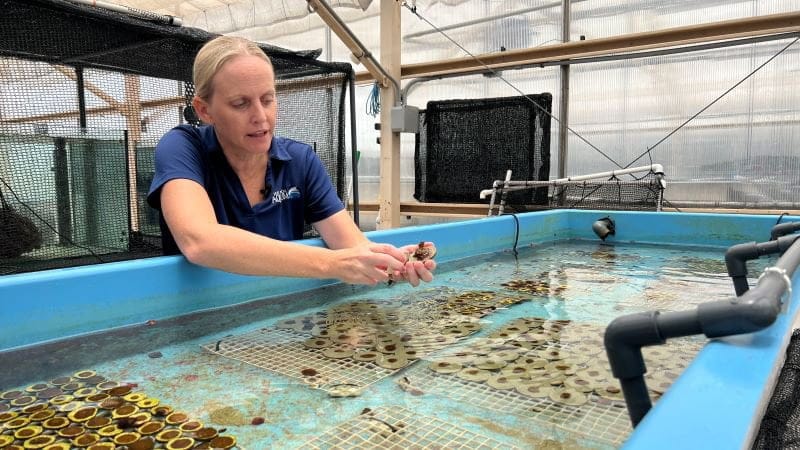Coral Rescue: A look inside the Florida Aquarium’s expanded Coral Conservation & Research Center
The Florida Aquarium, world-renowned for its leadership in coral restoration and reproduction, officially opened a new 4,200-square-foot expansion of its Coral Conservation and Research Center at the Apollo Beach campus.
During a recent ribbon-cutting ceremony, dignitaries, partners and stakeholders from across the state joined the celebration, highlighting the Aquarium’s unwavering dedication to advancing critical coral conservation efforts.
The Florida Aquarium’s innovative Coral Conservation Program has made international headlines with its reproductive breakthroughs, including:
- 2019: Spawned several species of Atlantic coral in a laboratory setting for the first time.
- 2020: First in the world to reproduce the ridged cactus coral & spiny flower coral. Induced spawning of the grooved brain coral.
- 2022: Successfully reproduced elkhorn coral in the care of marine biologists.

The expansion more than doubles the current facility and is a pivotal step for the aquarium’s acclaimed coral restoration and research work. In collaboration with the Florida Fish and Wildlife Conservation Commission (FWC), the addition takes on added significance in the wake of the detrimental impact of last summer’s record-breaking warm ocean temperatures on threatened and endangered coral species along the Florida Reef Tract, the third largest barrier reef in the world.
The new area provides space beyond the aquarium’s existing coral greenhouses and spawning laboratories. With 9,000 total square feet, the facility is dedicated to preserving, breeding and rearing corals facing the risk of extinction in the wild. There are 14 coral species spawned at the Aquarium’s coral center, which are rarely held in human care.
SPAWNING SEA URCHINS
Another important part of the Florida Reef Tract is the sea urchin population. For several years, The Florida Aquarium has been working with researchers with the University of Florida to spawn sea urchins in its lab to release them back to the reef through FWC. It is the largest effort to re-stock the urchin population in the last 20 years. These urchins provide a vital service, scouring over the reef’s surface and feeding on algae that is fueled by pollution and can suffocate healthy coral reefs.

SEA TURTLE REHABILITATION CENTER
Adjoining the Coral Conservation and Research Center is the Aquarium’s Sea Turtle Rehabilitation Center, where right now, biologists are caring for several cold-stunned turtles from the Northeast. Sea turtles that have stranded due to cold water temperatures receive care from biologists at the facility with the goal to release the turtles back into the ocean.
VISIT THE FLORIDA AQUARIUM’S APOLLO BEACH CAMPUS
The aquarium’s Apollo Beach campus is open to the Public Nov. 1 through April 1 with TECO’s Manatee Viewing Center. It is a free activity and there are natural trails, manatees, stingrays and educational displays. The Florida Aquarium campus is located on the outer edge of the property. Guests can hike or take a tram to visit The Florida Aquarium Sea Turtle Rehabilitation Center as well see the Coral Conservation and Research Center via video feed.
HOW YOU CAN HELP
There are many factors affecting reefs, but ultimately reducing our carbon footprint and being more conscious of waste and water usage makes the biggest difference. There are also small changes you can make in your life that add up to help our blue planet such as recycling, using cloth grocery bags and eliminating use of straws.
If you are interested in volunteering with The Florida Aquarium, visit the Aquarium’s website to apply and specify your area of interest.

Originally published in the April 2024 issue of Tampa Bay Parenting Magazine.


